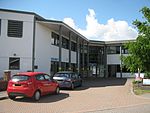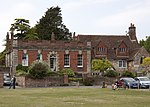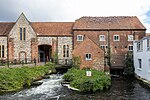1906 Salisbury rail crash
1906 disasters in the United Kingdom1906 in England20th century in WiltshireAccidents and incidents involving London and South Western RailwayDerailments in England ... and 7 more
EngvarB from March 2020History of SalisburyJuly 1906 eventsRail accidents caused by a driver's errorRailway accidents and incidents in WiltshireRailway accidents in 1906Train collisions in England

The Salisbury rail crash occurred in England on 1 July 1906, when a boat train from Plymouth to London failed to negotiate a sharp bend at more than twice the speed limit and crashed into another train, killing 28 people. It is believed that the driver was trying to demonstrate the speed of the service, in competition with a rival railway company.
Excerpt from the Wikipedia article 1906 Salisbury rail crash (License: CC BY-SA 3.0, Authors, Images).1906 Salisbury rail crash
Fisherton Street, Salisbury Churchfields
Geographical coordinates (GPS) Address Phone number Website Nearby Places Show on map
Geographical coordinates (GPS)
| Latitude | Longitude |
|---|---|
| N 51.0708 ° | E -1.8042 ° |
Address
The Balti House
Fisherton Street 139
SP2 7DT Salisbury, Churchfields
England, United Kingdom
Open on Google Maps










